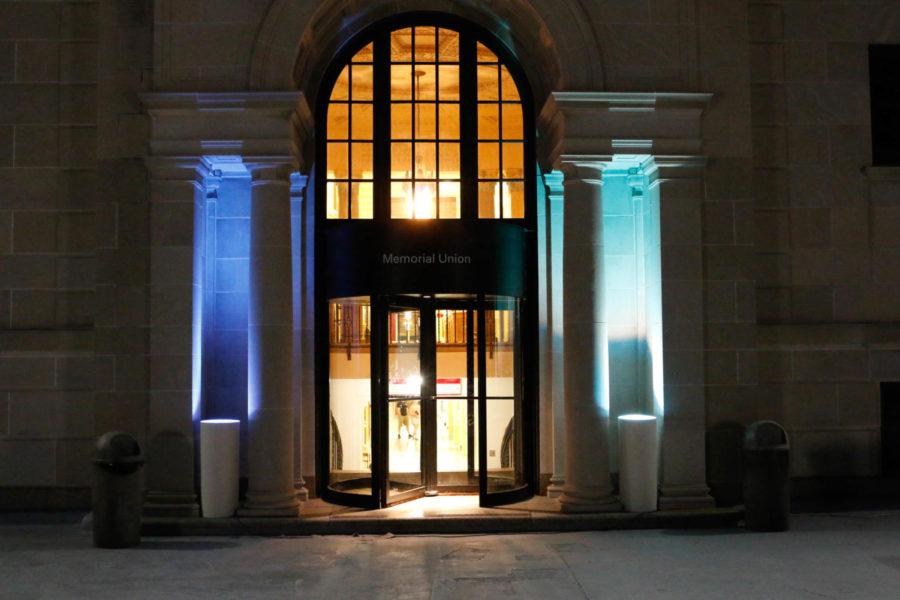Editorial: Autism awareness month
Jack MacDonald/Iowa State Daily
The Memorial Union, along with the Campanile and various Greek houses, lit up blue last weekend in order to support autism awareness month.
April 16, 2018
Many of you probably have seen news anchors or public figures wearing a blue puzzle piece pin on their jackets this month. These puzzle piece pins are in support of Autism Awareness Month, a countrywide effort to increase autism awareness and inclusion.
There has been some controversy over the sign of the puzzle piece, with some calling it offensive while others love it.
Those who are against it say the puzzle piece logo makes it seem as if the people who have autism are puzzling and hard to figure out. The idea of a puzzle shows that those who have autism aren’t normal and have to be figured out.
Meanwhile, others very much enjoy the puzzle piece, saying it is a unique and clear symbol for autism awareness, similar to the pink ribbon for breast cancer. It provides clear identification for the cause and all those who choose to support it.
But whether you support it or not, the puzzle piece has been effective.
Two NCAA basketball coaches, Pat Skerry and Tom Herrion, along with Autism Speaks, created Coaches Powering Forward for Autism, a campaign to raise awareness and money for autism awareness. This campaign resulted in more than 82 NCAA coaches and broadcasters wearing the pin in 2015.
But beyond that, people recognize it. When you see that puzzle piece, you know whoever is displaying it supports autism. And if you don’t know what that blue puzzle piece stands for, then it creates curiosity and drives people toward finding out, which gives Autism Awareness Month more attention.
Despite the controversy, the puzzle piece is working.
If you’re looking for ways to get involved yourself, you can always stay informed on autism-related news and issues, attend local autism conferences and events, and there is always the option to donate. Autism Speaks or the Autism Society are both perfect places to do all three of these things.
You could even wear the blue puzzle piece pin on your jacket or backpack.
So no matter where you fall on this topic, the blue puzzle piece has been seen by many and is effective at creating more awareness of autism. And isn’t that the ultimate goal?
Let’s stop arguing about the symbol for a positive and uplifting movement, especially when it is working, and just focus on creating an inclusive society for those who have autism.
















